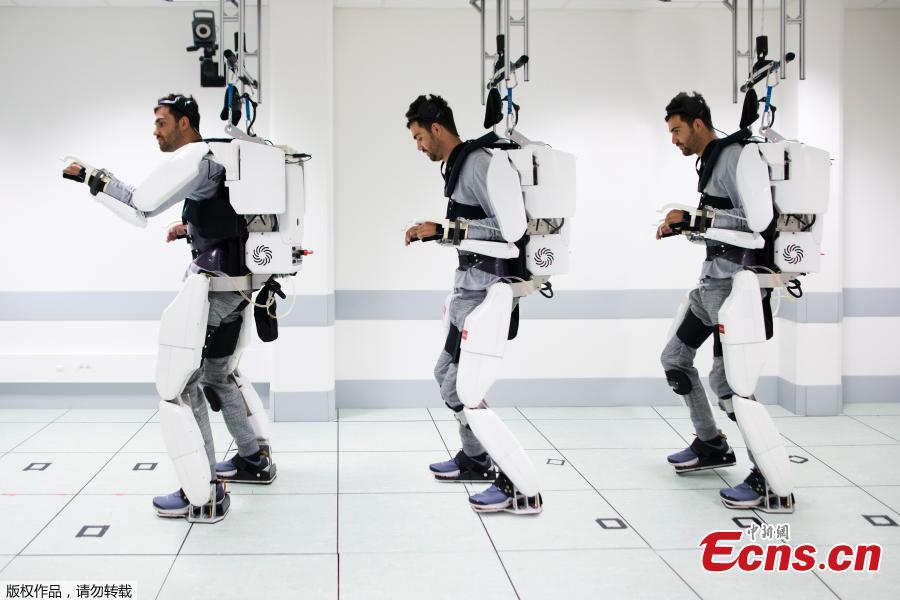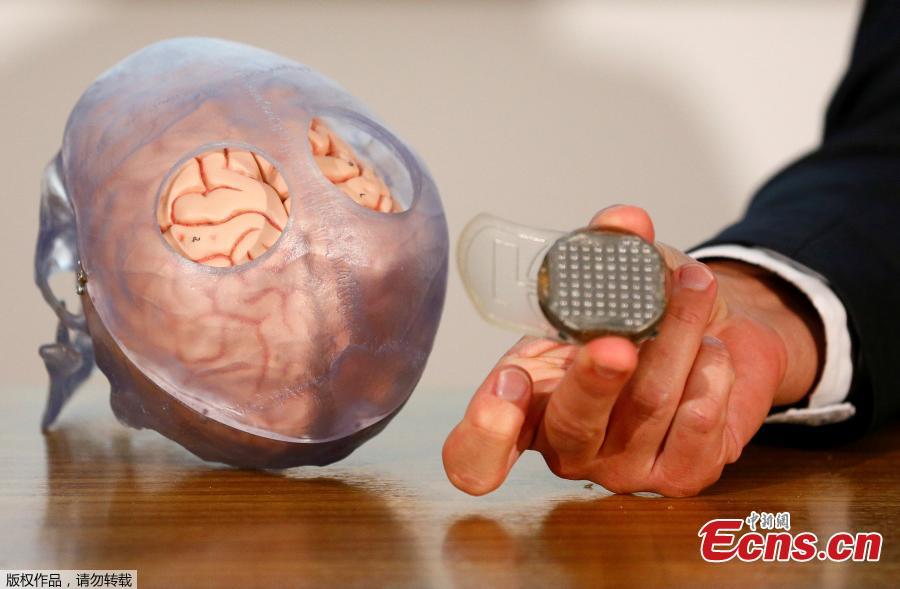
A man paralyzed from the shoulders down has been able to walk using a pioneering four-limb robotic system, or exoskeleton, that is commanded and controlled by signals from his brain. With a ceiling-mounted harness for balance, the 28-year-old tetraplegic patient used a system of sensors implanted near his brain to send messages to move all four of his paralyzed limbs after a two-year-long trial of the whole-body exoskeleton.The results, published in The Lancet Neurology journal on Thursday, bring doctors a step closer to one day being able to help paralyzed patients drive computers using brain signals alone, according to researchers who led the work.(Photo/Agencies)

A man paralyzed from the shoulders down has been able to walk using a pioneering four-limb robotic system, or exoskeleton, that is commanded and controlled by signals from his brain. With a ceiling-mounted harness for balance, the 28-year-old tetraplegic patient used a system of sensors implanted near his brain to send messages to move all four of his paralyzed limbs after a two-year-long trial of the whole-body exoskeleton.The results, published in The Lancet Neurology journal on Thursday, bring doctors a step closer to one day being able to help paralyzed patients drive computers using brain signals alone, according to researchers who led the work.(Photo/Agencies)

A man paralyzed from the shoulders down has been able to walk using a pioneering four-limb robotic system, or exoskeleton, that is commanded and controlled by signals from his brain. With a ceiling-mounted harness for balance, the 28-year-old tetraplegic patient used a system of sensors implanted near his brain to send messages to move all four of his paralyzed limbs after a two-year-long trial of the whole-body exoskeleton.The results, published in The Lancet Neurology journal on Thursday, bring doctors a step closer to one day being able to help paralyzed patients drive computers using brain signals alone, according to researchers who led the work.(Photo/Agencies)























